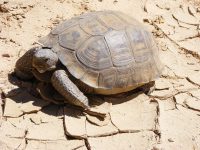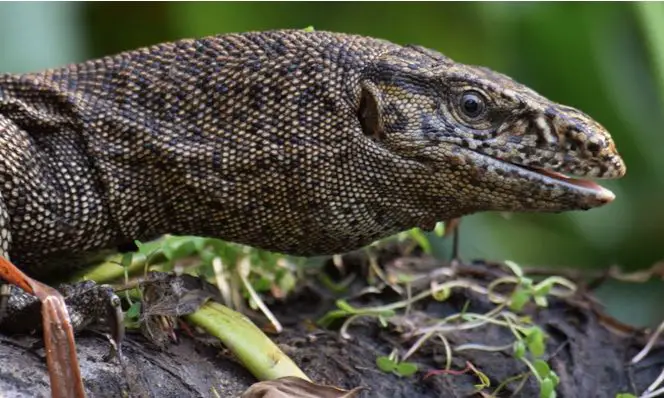There are two species of desert tortoises: (Gopherus agassizii) and (Gopherus morafkai). The shape of their upper shell is like a dome and it is greenish-brown to tan in color.
These tortoises tend to prefer water-logged soils. They dig quite deep into the sand for nesting. The nest of these tortoises is from 7.6 to 25 centimeters deep. They dig 5 to 25 burrows in a year. However, at times, they also share holes of other animals and birds like burrowing owls, rattlesnakes, woodrats and squirrels. Almost 23 tortoises can stay in one burrow. They are present from underground and high up the altitudes as high as 3,500 to even 5,300 feet.
They can grow from 25 to 36 centimeters in length and weigh up to 11 pounds. They are 10 to 15 centimeters high. Male turtles are larger in size than the females and their tails are also bigger.
These desert tortoises have a lifespan of 50 to 80 years.
have a lifespan of 50 to 80 years.
Desert tortoises mature at the age of 15 to 20 years. Spring and fall are mating seasons of these tortoises.
A female tortoise lays a clutch size of 4 to 8 eggs. In one breeding season, it lays 3 clutches. The eggs are hatched after 90 to 135 days.
G. agassizii is widely distributed toward the southern part of U.S. including Utah, California and Nevada. It was named after an American biologist, John L. Rodolphe Agassiz. G. morafkai, on the other hand, is found in Mexican states of Sinaloa and Sonora. It also occurs on the eastern side of Arizona’s Colorado River.
For most of the time, they seek shelter in their burrows and behind the rocks. This way they are able to reduce water loss due to great heat and regulate their internal body temperature. They can survive up to a temperature of more than 140 °F. However, they spend almost their entire life in burrows to stay away from scorching heat. Desert tortoises hibernate from November until the end of February.
These tortoises are herbivores and feed mainly on grasses. It also feeds on wildflowers, cacti, herbs and fruits. They are also found to eat soil. In summer, they take water from cactus fruits.
Some of the predators of desert tortoises are coyotes, badgers, kit fox, ravens and gila monster lizards.





